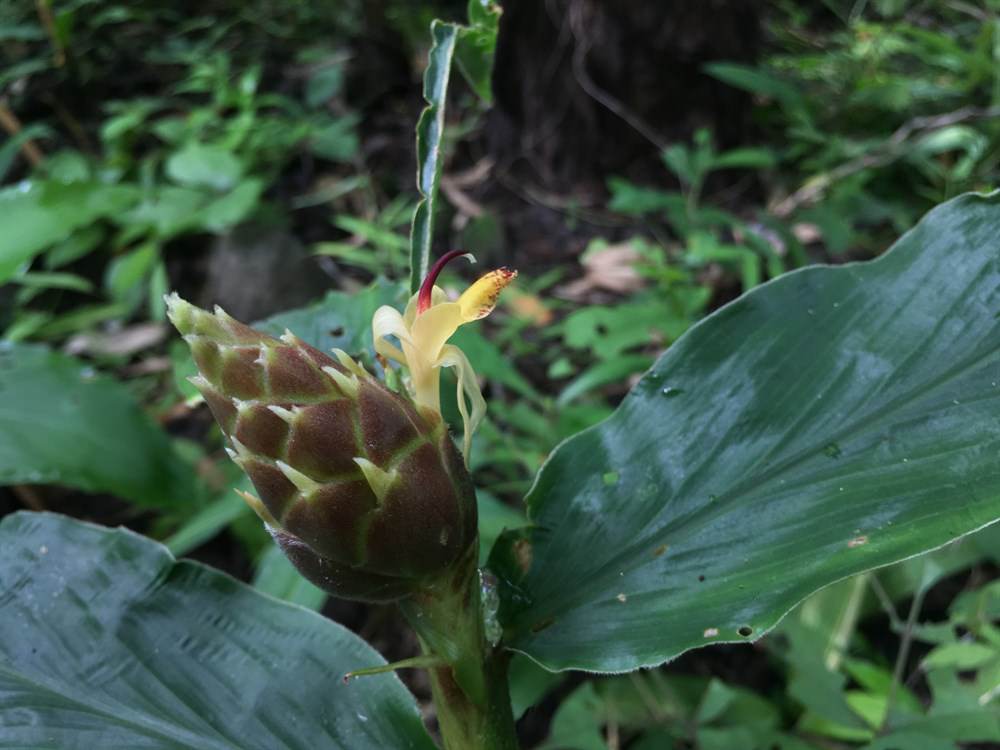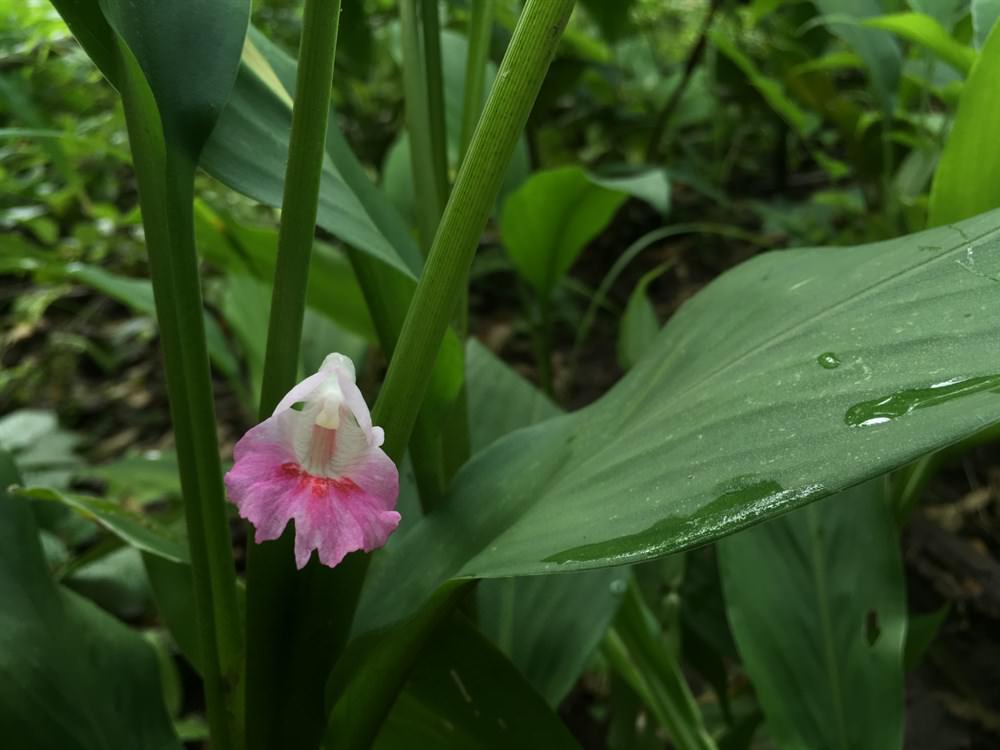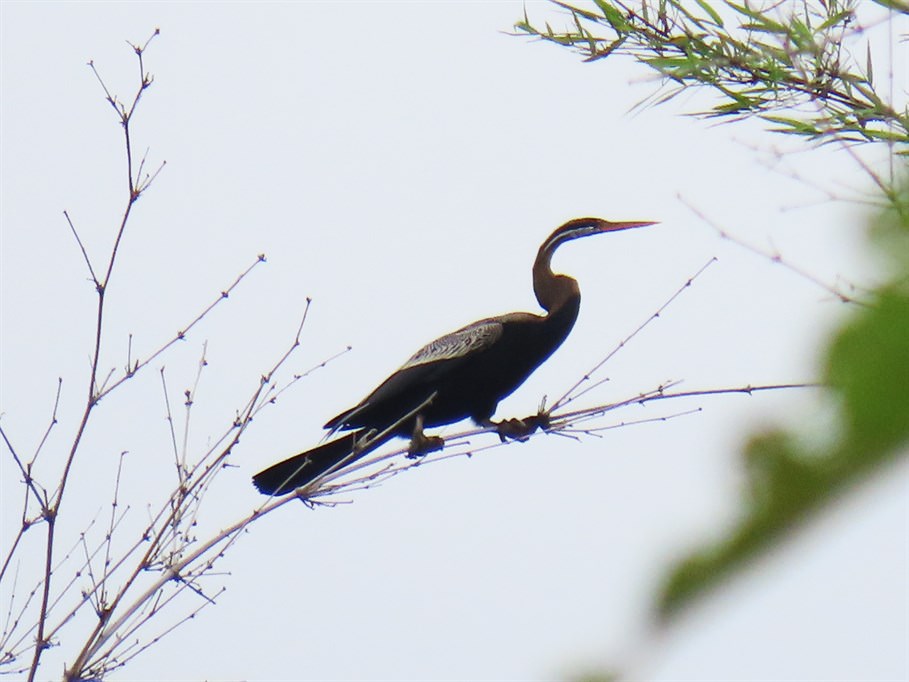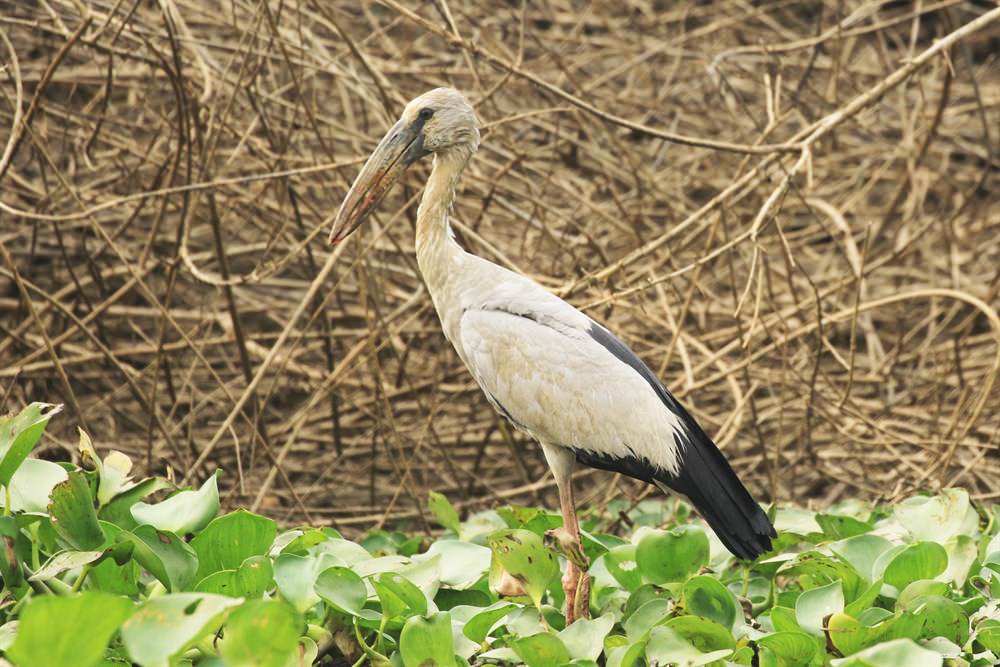Wild Cambodia Diaries 2
.jpg)
A typical field day wading through the thickets during the wet season
My first experience in our team’s wildlife surveys in Cambodia checked all the boxes for a spartan race. During a three-day visit in August, the height of the rainy season, our team of four (Bosco, two newly-recruited Cambodian colleagues and I) waded through the thickets, climbed over fallen trees, crossed rapid streams, scrambled through bamboo groves and fought off stinging ants and hornets. Pausing for a break after two hours of bushwhacking on our first morning, my clothes were soaked from sweating and brushing against moisture-covered vegetation. I checked the health app on my iPhone and was stunned to find that we only walked a mere 1.6km. We didn’t cover a lot of ground, but the jungle obstacle course made for a very good exercise!
.jpg)
Biodiversity assessment forms a crucial part of our first conservation venture beyond China initiated in 2017. Located in Kratie province in northeastern Cambodia, our project site boasts expansive deciduous dipterocarp and semi-evergreen forests. Over the past two years, our team has been very excited to have logged many globally threatened species, including two new bird records for Cambodia.
As the newest member of the team, having never set foot in this country, I formed my first impression from office and lunchtime conversations with my co-workers. And I have to say the region we are working in come across as mindboggling rich in wildlife. I would very much like to meet the many endangered wildlife living in our project site, like the Banteng (Bos javanicus), Annamese Silvered Langur (Trachypithecus margarita) and Green Peafowl (Pavo muticus).
But the nation has extreme climate swings. My colleagues warned that the dry season (November to May) is inhospitably hot, with the mercury rising up to 40°C, and they drink at least two litres of water during every field day. And come the wet season (June to October), it rains so much that everything is submerged – our camera traps included – and you have to put up with wet feet all trip long. When I asked which month is the most comfortable, I received an instant “no” for an answer. There's simply no in between.
.jpg) Water crossings is part of the daily routine. This photo was taken last year.
Water crossings is part of the daily routine. This photo was taken last year.
The antimalarial medication, which must be taken from the first day in Cambodia up till seven days after leaving the country, just adds to the misery. My colleagues cautioned that the pills make one lethargic and foggy. Under the influence, our resident birder once self-introduced himself as a fish expert!
So armed with a backpack stuffed with wildlife field guides, binoculars and camera, a suitcase full of clothing to tackle this land of extremes and a head full of nightmarish stories from the field, I embarked on this short expedition into uncharted territory, hoping seeing wildlife that I didn't know existed before starting this job would make up for all the hardships.
.jpg)
An aerial view of Cambodia
After tipping it down for a week before our arrival, the rainclouds had been very kind to me by taking a break. The constant deluge cooled the atmosphere but left the already rutted roads in a muddy mess – in some places the roads even collapsed or turned into a river. Sometimes we just abandoned the pick-up and hit the track.
Venturing into the jungle, I found that the understorey unveiled itself to be a paradise for the ginger family (Zingiberaceae) that is distributed widely throughout the tropics, particularly in Southeast Asia. Over the course of the three-day “spartan race”, I was blown away to find nine colourful and variably-shaped ginger species in total. My comrades, who are more of an animal than plant person, were less impressed, and the constant onslaught of mosquitos, ants and hornets just forces everyone to keep moving.
.jpg)
.jpg)
.jpg)


.jpg)
.jpg)

.jpg)
Globba sp.
Although I am told the wet season is a better time for bird surveys (because that’s when many species are breeding and at their most vocal), everything is new to me and left a deep impression nonetheless. We saw and heard about 60 species of birds in total, and I am pleased we added two new bird records to our survey database in one trip!


| There are three species of waterbirds in this photo. Can you tell them apart? How many can you count? These species roost close to one another and share the habit of spreading out their wings to dry. |
The Oriental Darter looks like |


|
The Green Peafowl is listed as Endangered by the IUCN Red List. Our Cambodia project site is proud to have a healthy resident population. Guided by their early morning calls, we found a family of five up on their roosting tree during our first morning. I was surprised that they are such good fliers by their size. |
The Asian Openbill loves eating snails just like we do, but we differ in the tools we use to eat this delicacy. While humans use two-pronged forks to pry cooked snails out of their shells, this large waterbird works its truly weirdly-shaped bill like a crab cracker to crush and feed on snails. |


|
My first hornbill sighting! We repeatedly |
We recorded five species of raptors during the trip. My favourites are |
We didn’t have much luck with mammals due to the limited field time. We only saw a Variable Squirrel, and on one of our camera traps found photos of Small Indian Civet, Wild Boar and Red Muntjac. The Collared Falconet and the three species of Nightjars which I was hoping to see eluded us. But I’m glad that the antimalarial pills had next to no effect on me, no persistent drowsiness. (Well, I did sleep away the day after I returned to Hong Kong as if I have taken flu medication. But it was only one day.)
Overall, it has been quite an adventure. I will need to be back during dry season!
Stay tuned for more upcoming stories on wild Cambodia!
Author: Joyee Chan (Project Officer, Kadoorie Conservation China Department)
Previous blogs:
https://www.kfbg.org/chi/blogs/secret-cambodiary-1.aspx
https://www.kfbg.org/chi/Cambodia.aspx
https://www.kfbg.org/eng/blogs/cambodia-bird-release.aspx

